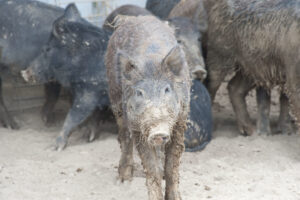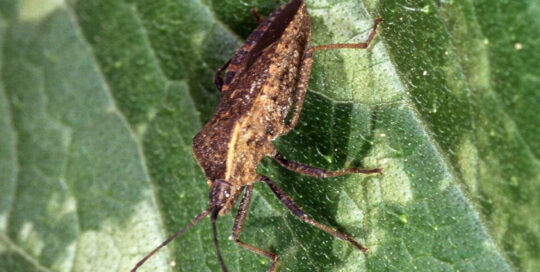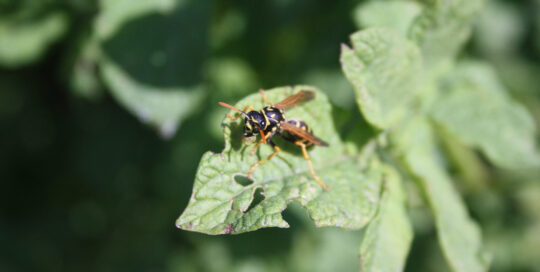This Little Piggy is a Problem: Dealing with Feral Hogs
Views: 170

Once again, feral hogs are in the news as their territory expands beyond the southern states. While many of us complain about deer invading our gardens, I feel for those who have to deal with feral hogs. Keeping them out is not an issue easy. Here are why feral hogs are a problem and what can be done.
Super Pigs
Living a thousand miles from what I thought was feral hog territory, I never considered the impact of what they do to a landscape. But now that they’re found in Alberta, Canada — practically at our back door — I’m definitely taking notice. They ended up in this northern region after Eurasian hogs were brought over from the United Kingdom to for a domestic breeding program.
What I didn’t realize, is these “super pigs” are nearly twice the size (some weighing over 600 pounds) as their southern cousins, have a thick coat of hair, and are smart enough to figure out things such as burrowing down in a snowbank to wait out a storm. It’s no wonder they’re wreaking havoc in the prairie communities throughout Alberta and Manitoba, and since the hogs have no concern of international borders, they’re poised to drift into Montana and North Dakota.
What’s the Problem with Feral Hogs?
Growing up, my dad raised a few pigs each year to fill our freezer, and any place they went had to be fortified because they were smart and strong enough to utilize weaknesses. The reverse also happens, and these feral hogs can easily break through many barriers to find food, completely uproot gardens, and harass livestock, even eating young lambs and calves. Plus, approximately ten-percent are infected with Brucella, a bacterium which causes cows to abort their calves, which means their mere proximity to livestock can be problematic.
They’re also very disruptive to the ecosystem, eating new growth, including tree saplings, before they even have a chance to reforest an area. Feral hogs also consume forage for other wildlife, such as the acorns deer love so much. And they’ll even decimate ground nesting birds. In short, they’re bad news for everyone.
What Can Be Done to Keep Out Feral Hogs?
There are a number of resources on the internet recommending using predator pee or similar measures to dissuade hungry pigs, but they do not work… at least not for very long. Propane air canons, such as ones used to keep birds from fields, are sometimes employed, but these, too, are limited. Feral hogs are smart enough to figure out that no harm results from the loud noise and they return in short order.
Fencing in the best option, but it takes more than a flimsy barrier to keep them at bay. Not only should the fencing be five-feet tall, with barbed wire along the top, to keep them from climbing over, it needs to be buried up to two-feet horizontally to keep them from burrowing underneath. This technique to secure the bottom section is called apron fencing, and you have to be fairly aggressive on this end to keep them from digging into the area. Galvanized wire with four-inch squares, at the maximum, is the optimum material to use, although single strands, once again, no more than four-inches apart, can also be used.
Incorporating electric fence into the mix is a wise idea to add another layer of deterrent. My thought is, if it works for grizzly bears, it has to be somewhat effective on feral hogs. Some experts recommend baiting the fence with peanut butter or another attractant to give them a quick lesson on why it’s best to stay away. Actually, combining a few strands of electric fence with a galvanized, mesh fence provides the best results.
Dealing with feral hogs is no joke, and even building fences to keep the deer out of the garden is nothing like what is needed to effectively protect your plants from these voracious pigs. But, since they are unfortunately here to stay, it’s best to build more than you need at the moment because there will also be hogs to test your strategies.
This photo is courtesy of APHIS.
Meet Amy Grisak
Amy is a freelance author and photographer in Great Falls, MT who specializes in gardening, foods, and sustainable agriculture. She provides information on every kind…
Amy's Recent Posts

Squish Squash Bugs Before They’re a Problem








